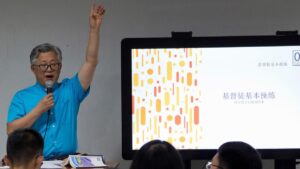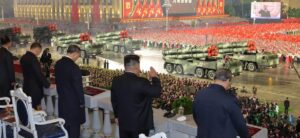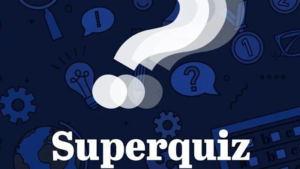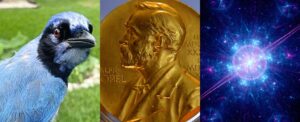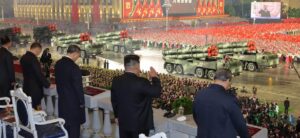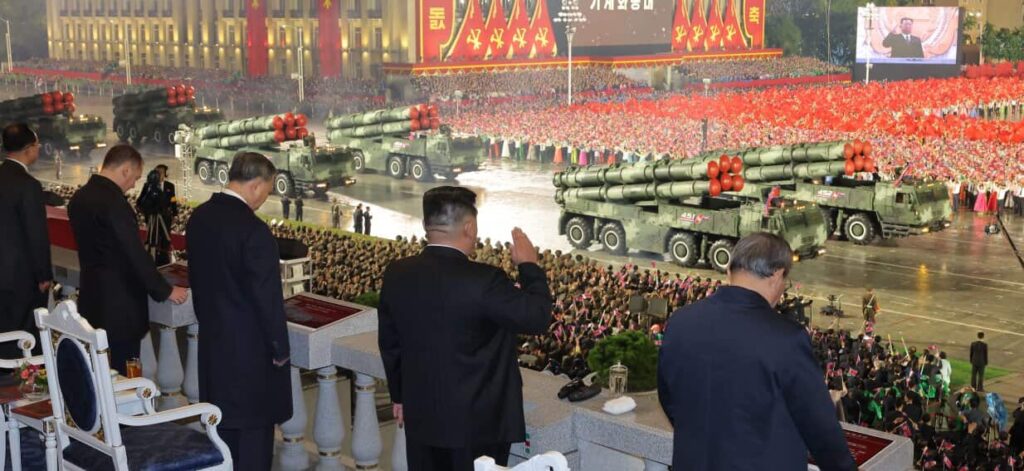
North Korea showcased its most powerful intercontinental ballistic missile during a military parade that took place on September 29, 2023. The event, commemorating 80 years under the ruling Workers’ Party, was attended by high-ranking officials from both Russia and China. According to state media, this display reflects the country’s advancing military capabilities amid ongoing geopolitical tensions.
The parade featured the new Hwasong-20 missile, hailed by North Korean media as the nation’s “most powerful nuclear strategic weapon system.” Attendees included Dmitry Medvedev, deputy head of Russia’s Security Council, Li Qiang, Premier of China, and To Lam, Vietnam’s leader. The leadership was seen seated closely near Kim Jong Un during the late-night festivities, as reported by the Korean Central News Agency (KCNA).
The event was not merely a military display; it also served as a platform for Kim to address the nation. He described the North Korean army as “invincible,” emphasizing its role in supporting the party’s objectives and promoting a vision for a bright future. He referenced the involvement of North Korean troops in the conflict in Ukraine, stating, “The heroic fighting spirit displayed… for international justice… demonstrated the ideological and spiritual perfection.”
According to reports, approximately 600 North Korean soldiers have died, with thousands more injured while fighting alongside Russian forces in Ukraine. This involvement underscores the alliance between North Korea and Russia, which has intensified in the wake of the conflict. KCNA characterized the parade as a demonstration of North Korea’s “inexhaustible defense technology potential” and its rapid military advancements.
In addition to the Hwasong-20, the parade included long-range strategic cruise missiles, drone launch vehicles, and various ground-to-air and ground-to-ground missiles, reinforcing North Korea’s commitment to developing its military arsenal.
The parade coincided with a period of heightened diplomatic activity in the region. Recent statements from Seoul indicated that a potential meeting between North Korea and the United States at this year’s APEC Summit in South Korea could be forthcoming. This follows a series of meetings between former President Donald Trump and Kim, which ultimately did not yield a lasting resolution regarding North Korea’s nuclear ambitions.
The significance of the parade extends beyond mere military display. Seong-Hyon Lee, a visiting scholar at the Harvard University Asia Center, articulated that this event should not be viewed in isolation. He described it as part of a broader strategic shift in regional geopolitics, indicating that the strengthened alliance between Seoul and Washington will likely provoke a consolidated response from North Korea, Russia, and China.
In the wake of the parade, a joint statement from Moscow and Pyongyang reiterated Russia’s support for North Korea’s defense initiatives. This alignment highlights the increasingly complex dynamics in East Asia, where military parades and diplomatic overtures are intertwined, reflecting a rapidly evolving landscape.
The global community continues to monitor these developments closely, as North Korea asserts its military capabilities while navigating its international relationships. The implications of its actions may have far-reaching consequences for regional stability and diplomatic efforts moving forward.
